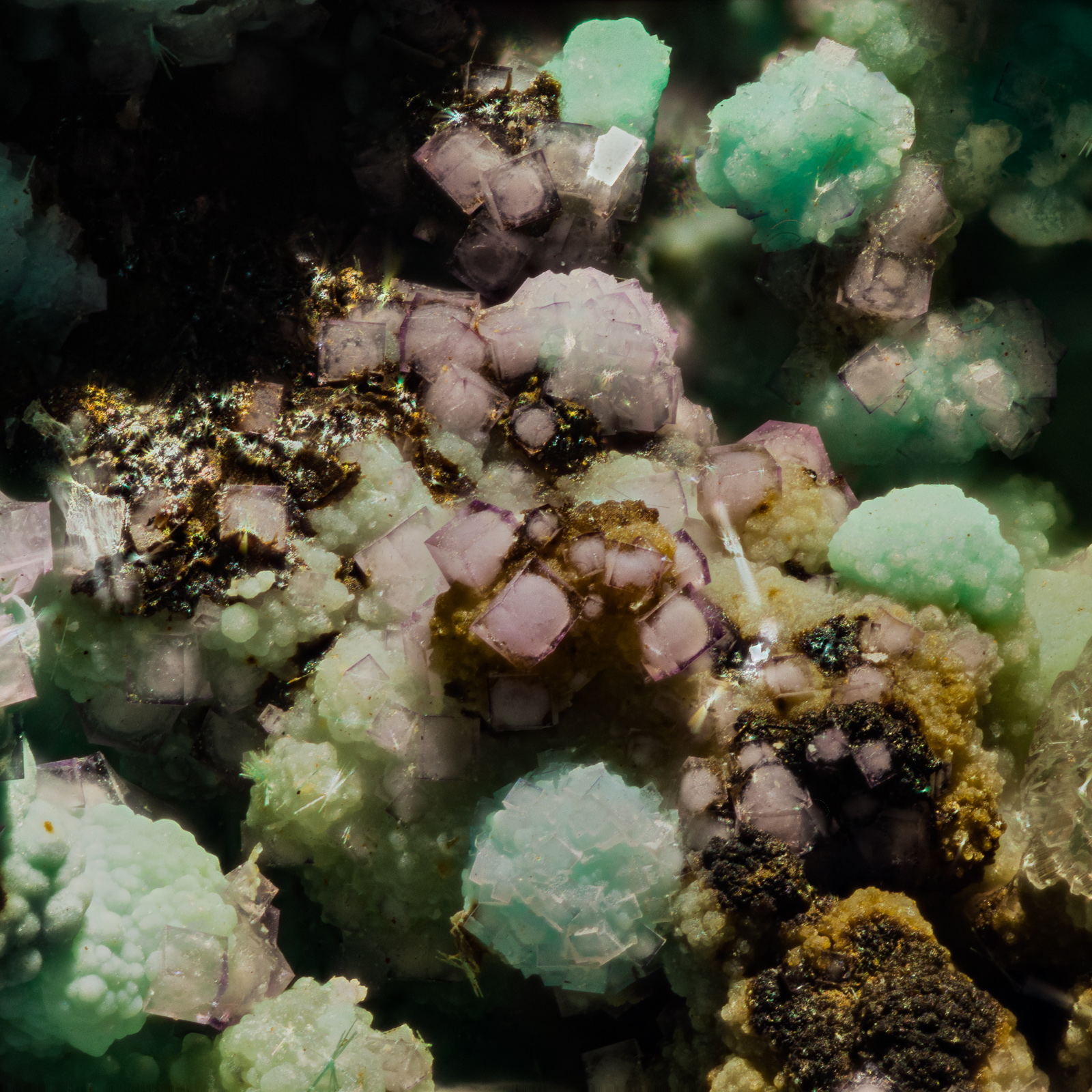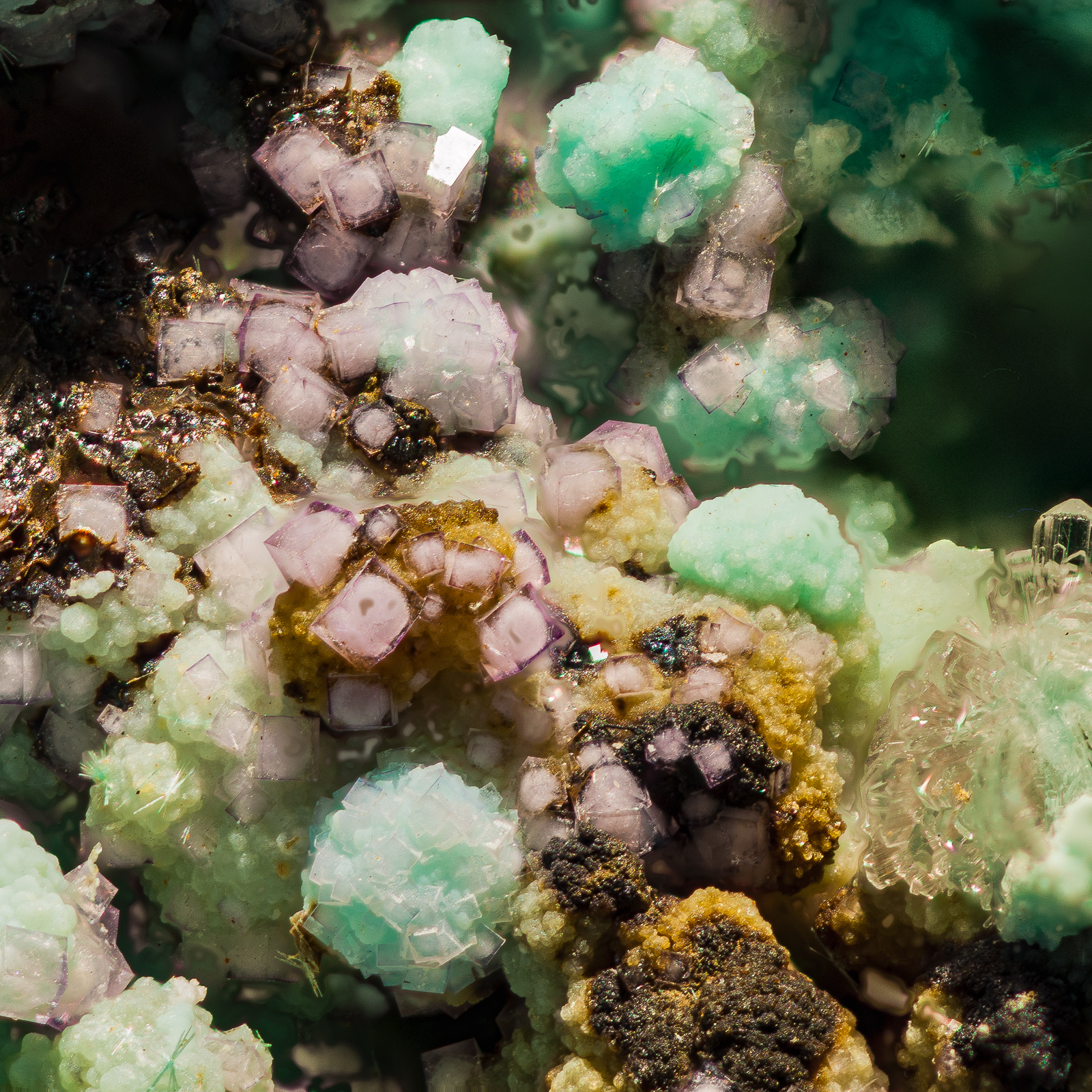
I used the MPE-65 set at 5x and f/2.8. I set exposure to manual and 1/6 of a second.
Lighting is a single Jansjo lamp with no diffuser. I left my flurorscent room lights on during the shoot because I am lazy. I set my color balance to 3600K as a wild guess.
I am using a 20 micron (0.020 mm) step size, which is 12 motor steps for my rail. I set the bottom focus to 98800 and the top to 100500, which yielded 137 exposures. I took a few manual exposures to check things, then deleted those.
I had lightroom directly capture the images, which it saved as DNG files. When it finished, I used Ctrl-A to select them all, then used the lightroom export to generate TIF files, putting them back into the same directory without resizing or renaming.
Then I launched Zerene and used File -- Add Files to bring the TIF files into Zerene. Once they were in, I used "Stack, Pmax" to do the stacking, which took about 7 minutes. When it was done, I saved the result directly to the 2022_minerals folder.
When this was done, I went to lightroom, found the final TIF image in the 2022_minerals folder and imported it into lightroom. I did not yet delete all the "pieces", which is good because there is a bright streak on the image and I want to explore the Zerene retouching features to get rid of it. When I am finished, I intend to delete all of the parts and pieces in the working folder and just keep the final TIF for any stacked photo I take.
I am using my Canon 1D mark III with the APS_H sensor. This is 3888 by 2592 pixels and 28.1 by 18.7 mm in size. I cropped my exports to be square, and with the 5x setting on the lens, this should be 3.74 mm on a side.
Here is the image with the streak:

Pmax requires a "contrast threshold" to be set. This is new to me. I pick a value of 14 rather than the default 20, but need to learn about this.
I have used two of the original images and the brush to get rid of the light streak. And I rather like the Dmap image better, but brushed in the shadowed areas from the Pmax image because Dmap was doing weird stuff with out of focus shadow areas. I was able to get rid of the big light streak (and another I didn't originally notice) by finding a source image without it and with the area in focus and brushing it in. It really works well and is much easier than I thought it would be. In less than a minute I have made major improvements to the image without really knowing what I am doing yet.

Tom's Computer Info / tom@mmto.org